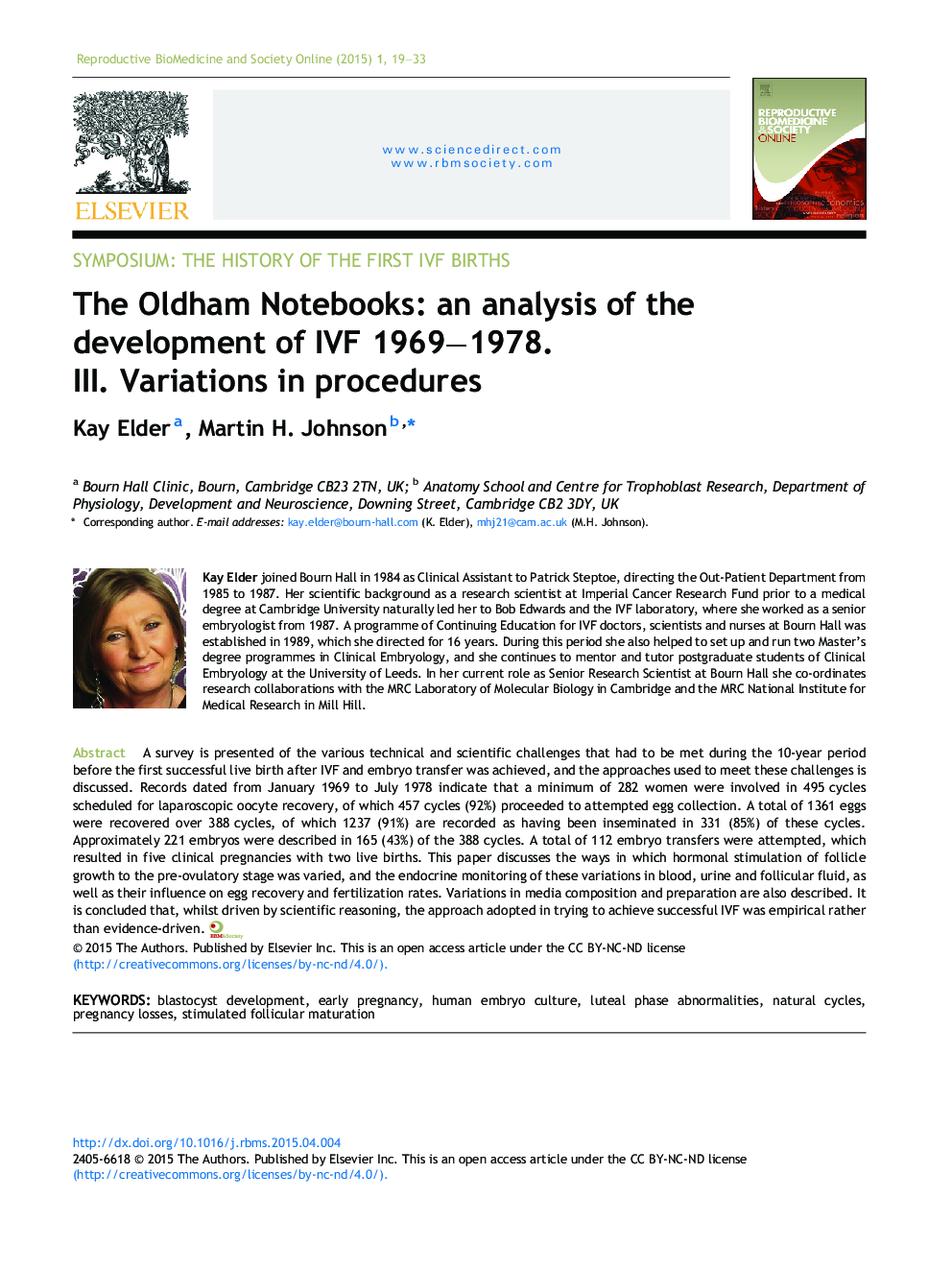| Article ID | Journal | Published Year | Pages | File Type |
|---|---|---|---|---|
| 1090092 | Reproductive Biomedicine & Society Online | 2015 | 15 Pages |
A survey is presented of the various technical and scientific challenges that had to be met during the 10-year period before the first successful live birth after IVF and embryo transfer was achieved, and the approaches used to meet these challenges is discussed. Records dated from January 1969 to July 1978 indicate that a minimum of 282 women were involved in 495 cycles scheduled for laparoscopic oocyte recovery, of which 457 cycles (92%) proceeded to attempted egg collection. A total of 1361 eggs were recovered over 388 cycles, of which 1237 (91%) are recorded as having been inseminated in 331 (85%) of these cycles. Approximately 221 embryos were described in 165 (43%) of the 388 cycles. A total of 112 embryo transfers were attempted, which resulted in five clinical pregnancies with two live births. This paper discusses the ways in which hormonal stimulation of follicle growth to the pre-ovulatory stage was varied, and the endocrine monitoring of these variations in blood, urine and follicular fluid, as well as their influence on egg recovery and fertilization rates. Variations in media composition and preparation are also described. It is concluded that, whilst driven by scientific reasoning, the approach adopted in trying to achieve successful IVF was empirical rather than evidence-driven.
